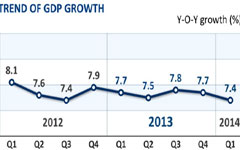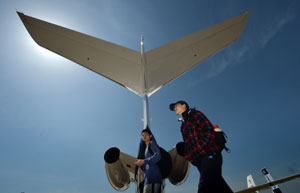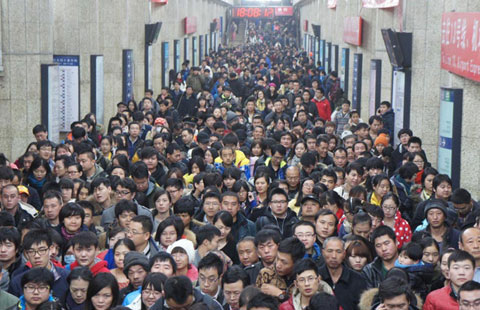US business whips Shanghai's 'wave of capital migration'
By He Wei (China Daily) Updated: 2014-04-17 07:19The business aims of SMEs - companies with 500 or fewer employees worldwide - are distinct from larger firms, said Chris Wingo, founder of China Sage Consultants (Shanghai) Co, whose firm helps SMEs from the US prepare and manage their businesses in China.
A big "driver for SMEs to come to China was their larger business partners, namely multinational corporations, when they started manufacture in China and wanted their supply chain to be here with them. It was like a command," he said.
 |
 |
The greater Shanghai region, including neighboring economic powerhouses Jiangsu and Zhejiang provinces, has proven attractive for smaller businesses due to its accessibility for global businesses, said Zhou Zhendong, president of Jiangsu Eastman Heavy Machinery Co Ltd.
"Shanghai and the rest of the Yangtze River Delta region boast a strong network of distribution, suppliers, executives and engineers that are valuable to our business," said Zhou, whose company is a Sino-US joint venture.
Zhou said companies sourcing in the area tend to avoid top supply-chain risks such as infrastructure, bureaucracy, intellectual property rights and corporate transparency, and Shanghai has a record of being the most business-friendly city in the country, he said.
"Here you see a concentration of equipment-rental houses, construction projects as well as component suppliers," Zhou said. "It's easy for global customers to come visit and easily attract skilled labor, including managerial-level candidates."
In the bigger picture, a shift occurred when more Western manufacturers pulled investment out from China's coastal regions and moved either inland or to lower-cost markets within the Association of Southeast Asian Nations. ASEAN's 10 members include Myanmar, Vietnam and Cambodia.
The American Chamber of Commerce's survey showed US SMEs preferred to enter the service sector, with 76 percent reporting services as their main activity, compared with 43 percent for larger ones.
|
 |
 |
| China's top 10 richest cities |
- Sinopec to pay $1.2b for stakes in Lukoil projects
- Silk Road tourism fair set for September in Xi'an
- China's first bitcoin ATM debuts in Shanghai
- Leaving on a jet plane
- US business whips Shanghai's 'wave of capital migration'
- Top 10 countries with highest GDP in 2013
- Change in banks' cash reserves aimed at boosting agriculture
- Cheaper coal imports cause losses locally

















